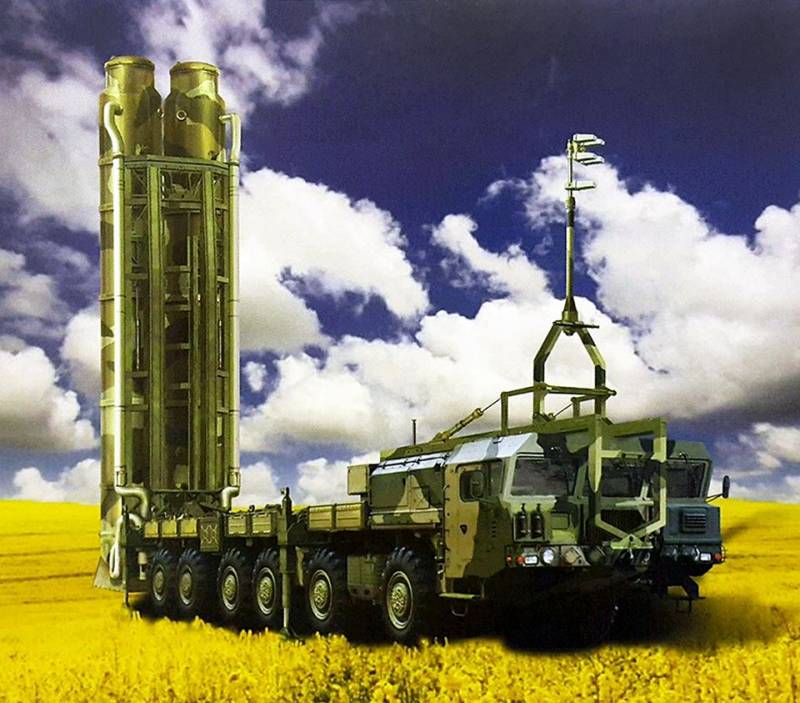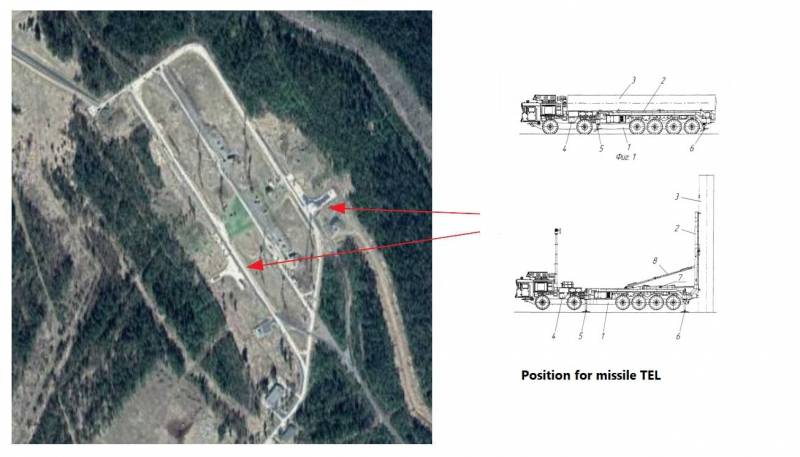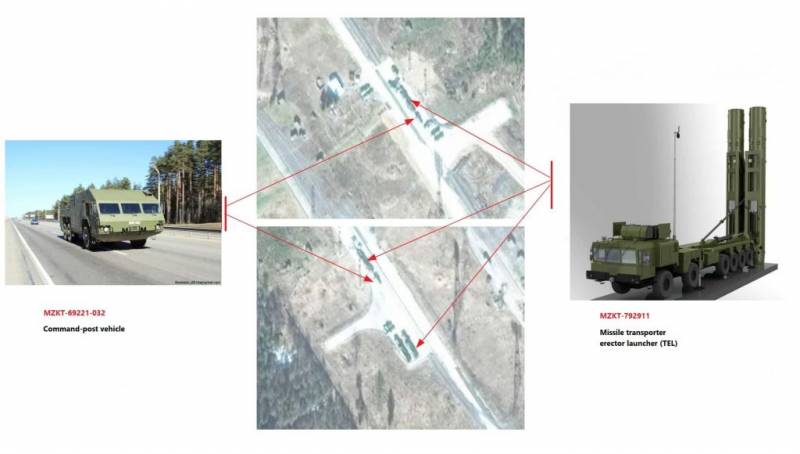American Intelligence Interested in Nudol Project
The current situation has a curious feature. The “Nudol” project attracts increased attention of foreign media, but the authors of official documents from other countries are not inclined to exaggerate its importance. Moreover, in some cases, affecting the topic as a whole, they prefer not to concretize or indicate specific types of products developed in Russia.
For example, the Pentagon recently released a new missile defense review, 2019 Missile Defense Review, which focused on topical threats in the nuclear-missile field and the answers to them. In one of the sections of the report, Russian developments in the field of anti-satellite weapons, to which the Nudol complex is traditionally referred abroad, were mentioned. The report noted that Russia is developing ground-based anti-satellite weapons designed to destroy orbital targets with a direct hit. Also, the reviewers of the missile defense review recalled the strange and suspicious Russian-made spacecraft. At the same time, the actual “Nudol” is not mentioned in the document.
***
New messages directly on the Nudol complex, also known as PL-19, were published on January 18 by the American television channel CNBC. The editors of the channel through an unnamed intelligence officer was able to get acquainted with some of the data from a secret report of one of the intelligence agencies of the United States. This document contained very interesting information. American intelligence was able to establish that a few weeks ago, Russian experts conducted regular tests of the Nudol product and obtained quite good results.
According to CNBC, the next test launch took place on December 23 last year. The anti-satellite missile took off from a mobile ground launcher and set off for a conventional target. Its flight lasted 17 minutes, during which time the rocket was able to cross the 1864 miles (3 thousand km). Then the interceptor missile fell in a given area. Start recognized as successful.
It should be recalled that the foreign press is not the first time publishing data about the tests of the Russian anti-satellite complex. Since 2014, foreign media have repeatedly written about the Nudoli tests, obtaining the necessary data from their sources in intelligence or the US military. In general, according to foreign data, from 2014 to 2018, Russia conducted seven tests of a promising complex, including two last year. Five starts are called successful; the status of another is unknown: intelligence talked about failure, while other sources consider it successful.
Intelligence and the United States media claim that last year’s two Nudol missiles were launched at the Plesetsk test site. Instead of test benches used earlier, they used regular self-propelled launchers. Thus, the anti-satellite complex is already being tested in full configuration, which serves as a transparent allusion to the current stage of testing.
***
January 20 on profile resources and blogs, new interesting information about the project "Nudol". This time it was about the features of placing his funds at the Plesetsk test site. Using available satellite images of the Earth’s surface, military enthusiasts were able to determine the most probable site for testing a promising complex.
It is assumed that the test launch system "Nudol" used the former launch pad with a set of tools for the carrier rocket "Cyclone". Several years ago, this platform began to be rebuilt for the needs of promising systems, and by now it has returned to operation in a new role. Apparently, in the course of the restructuring, they abandoned the existing silo launcher, and the launches of new missiles are now being conducted from open sites.
The new satellite images captured a section of the Plesetsk cosmodrome, which has several parallel tracks with access to them. Next to the two longitudinal tracks, a pair of side platforms of sufficient size is provided - apparently, these are starting points. The commercial satellite has managed to remove not only the infrastructure of the landfill, but also the equipment on it. At both starting positions there are long machines on the chassis of the brand "MZKT". Their appearance suggests the presence of transport-launch containers and missiles.
It was the presence of characteristic cars on a pair of new starting positions that became perhaps the main argument in favor of using the converted site with the PL-19 / Nudol complex. Also, it should be noted that a foreign commercial satellite was able to take photographs of real means of the latest complex of anti-space defense. Previously, specialists and lovers of military equipment had to rely only on drawings and diagrams allegedly related to the project.
***
For well-known reasons, Russian structures are in no hurry to publish all the most interesting data on the promising Nudol project. As a result, a significant part of the information - first of all, about the testing process - comes from foreign sources. However, the Russian Ministry of Defense and the enterprises participating in the project occasionally mention a new complex. Data from various sources, both domestic and foreign, allow us to make a rather detailed picture. In this case, however, is not without controversy.
According to Russian data, the Nudol complex is being created as part of a larger program to modernize the missile defense system. The purpose of the development work with the cipher "Nudol" is the creation of a firing complex, control station and other means for various purposes, made on a mobile chassis. Also, the complex should include a new long-range interceptor missile.
From domestic sources, it follows that the Nudol complex is intended for use in missile defense and should complement existing funds from its composition. Ammunition complex is called a space rocket. According to foreign data, the complex has other goals and is a system for the destruction of spacecraft in orbit. Similar conclusions were made, first of all, on the basis of the well-known flight characteristics of the new rocket.
OCD "Nudol" was launched at the end of the last decade. In 2010, this name was first mentioned in the official documents of one of the defense enterprises. In the future, repeatedly appeared new messages on the performance of certain works. Since 2014, there have been regular reports of test launches. Interestingly, this kind of data was first published by the foreign press, referring to its sources in US military circles. The Russian media, by announcing data on test launches, mainly relied on foreign sources.
The first launch of the Nudol missile, sometimes referred to as 14А042, according to foreign data, took place on August 12 2014. According to some sources, it ended in an accident, according to other sources - it was a throwing start with the desired results. 22 April 2015, the new launch, declared unsuccessful. 18 November of the same year, the testers completed the third launch - the first definitely successful. In the foreign press it was assumed that the purpose of this launch was to test the anti-satellite capabilities of the complex.
In November and December, 2016 of the year launched two new types of missiles at Plesetsk; Both launches are recognized as successful. December launch was the last with the use of an experimental launcher. In 2017, no launches were made or they were not reported. The sixth start was 26 March last year. The rocket took off from a self-propelled launcher and hit the target. In December, the seventh test launch took place, which became the fifth unambiguously successful.
The composition of the shooting complex "Nudol" should include several fixed assets built on special wheeled chassis. First of all, it is a launcher with interceptor missiles. A transport vehicle for its maintenance and a mobile command and computing station are also being developed. The question of radar systems remains open. According to the data of previous years, Nudol will work together with the existing radar stations and Moscow missile defense control devices. Whether this complex will receive its own car with a radar is unknown.
The characteristics of the rocket, known as 14А042, have not yet been published, but individual reports may be the basis for various assessments. So, during the last launch at the moment, an experienced rocket overcame about 3 thousand km. Taking into account the specifics of the flight along the Earth-to-Earth trajectory, one can imagine the approximate capabilities of a rocket to intercept ballistic or orbital targets. In both cases, we can talk about the firing range of hundreds of kilometers and reach an altitude of at least 100-150 km.
It is because of such assessments that “Nudol” is considered abroad not an anti-missile, but an anti-satellite weapon. It is believed that the characteristics at this level will allow the interceptor missile to attack the spacecraft in low orbits. However, official Russian sources do not yet confirm and do not refute the anti-satellite purpose of the new complex.
According to known data, while the PL-19 "Nudol" system remains on the test and therefore is used only at the Plesetsk test site. Previously, an experimental launcher was used to test new weapons, and to date, launch positions for self-propelled combat vehicles have been equipped. How long the tests will continue is unknown. Apparently, the complex will be adopted over the next few years.
The question of the further deployment of new weapons also remains unanswered. If "Nudol" is really a missile defense system and is intended to work as part of the defense systems of Moscow and the central industrial region, then the production complexes will be served in the relevant areas of the country. The use of mobile chassis and the assumption of the anti-satellite role of the complex, in turn, led to the appearance of a version about the possibility of its deployment in any region of the country, depending on the current needs of the army and current threats.
***
According to most Russian sources, the promising Nudol complex is being developed for use as part of a modernized anti-missile defense system and is intended to increase its potential. Foreign experts are inclined to see PL-19 as a promising weapon for fighting spacecraft. In such a role, a new Russian development may pose a particular threat to foreign armies. It is probably for this reason that “Nudol” is receiving close attention from various publications and specialists.
Modern armed forces actively use satellites for various purposes; With the help of such a technique, various tasks are solved - navigation, reconnaissance, communications, etc. Thus, a promising complex capable of destroying vehicles in orbit represents a serious threat to the army. According to foreign press reports, such systems are being created in our country and in China. They can be considered an asymmetric response to the development of other areas and, at the beginning of an open armed conflict, equalize the chances of armies. It is for this reason that each message about the testing of the Nudol system or its Chinese counterparts attracts attention and becomes a reason for discussion.
Apparently, the anxiety of the American specialists and the military connected with the PL-19 “Nudol” complex will constantly increase. Seven test launches of experienced missiles have already been completed, and this means that the tests may be nearing completion. The ready anti-missile / anti-space complex will be able to enter service in the foreseeable future, and this fact clearly will not go unnoticed.
Based on:
https://defense.gov/Portals/1/Interactive/2018/11-2019-Missile-Defense-Review/The%202019%20MDR_Executive%20Summary.pdf
https://media.defense.gov/2019/Jan/17/2002080666/-1/-1/1/2019-MISSILE-DEFENSE-REVIEW.PDF
http://militaryrussia.ru/blog/topic-806.html
https://cnbc.com/
https://defense.gov/
https://defence-blog.com/
http://freebeacon.com/
https://bmpd.livejournal.com/
- Ryabov Kirill
- Bmpd.livejournal.com, Defence-blog.com



Information